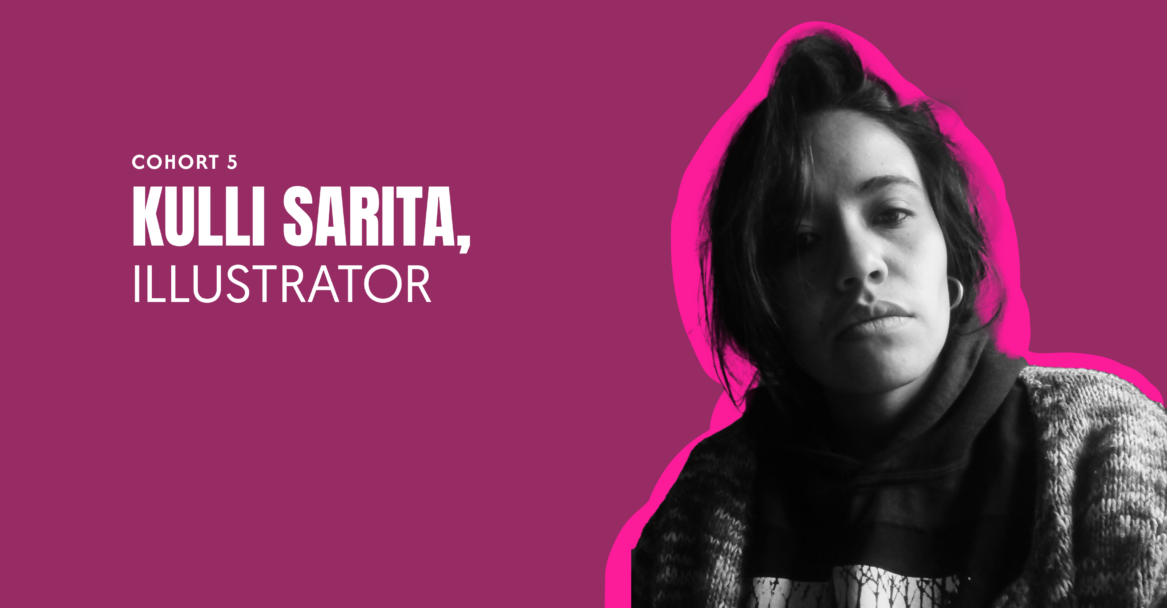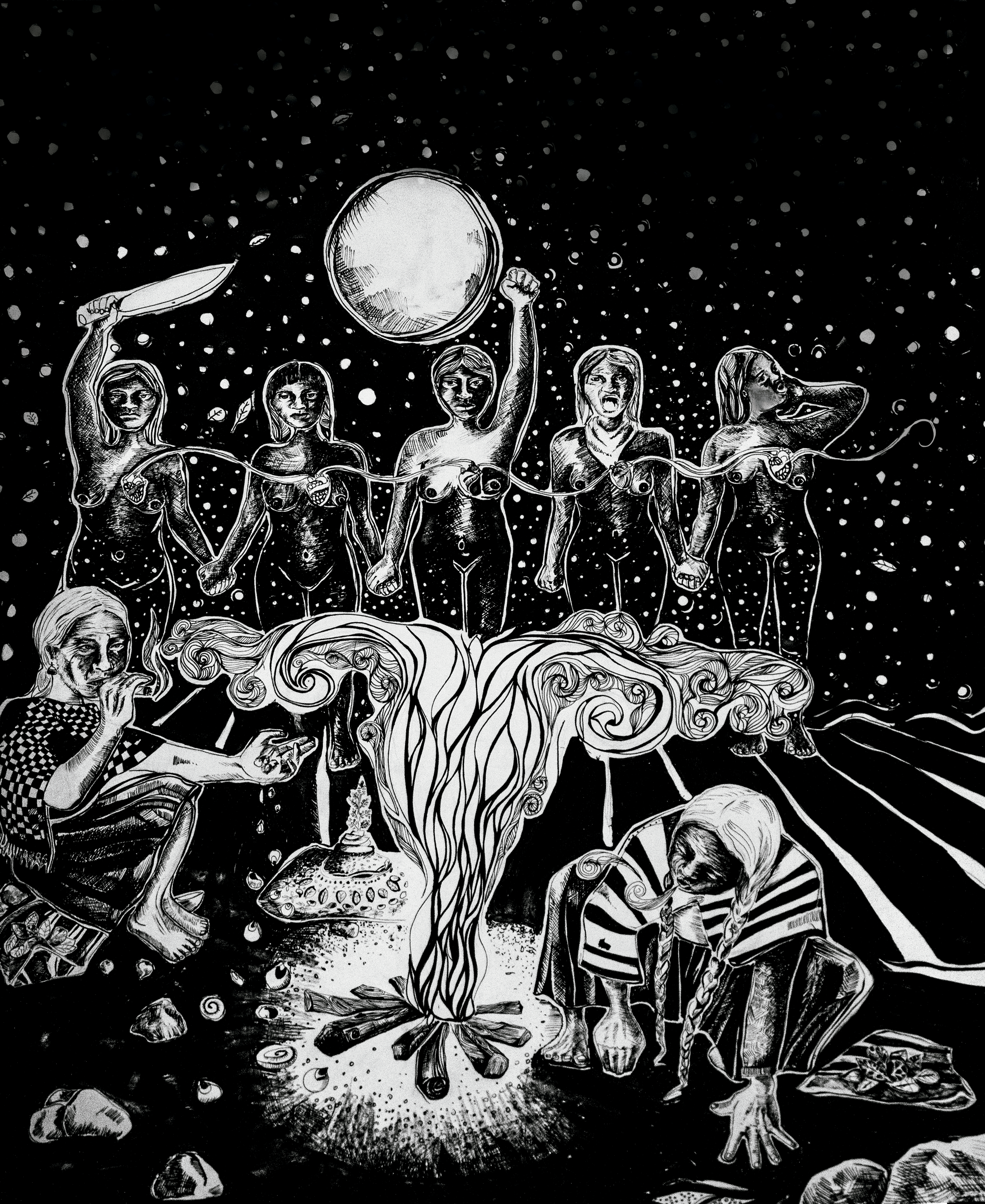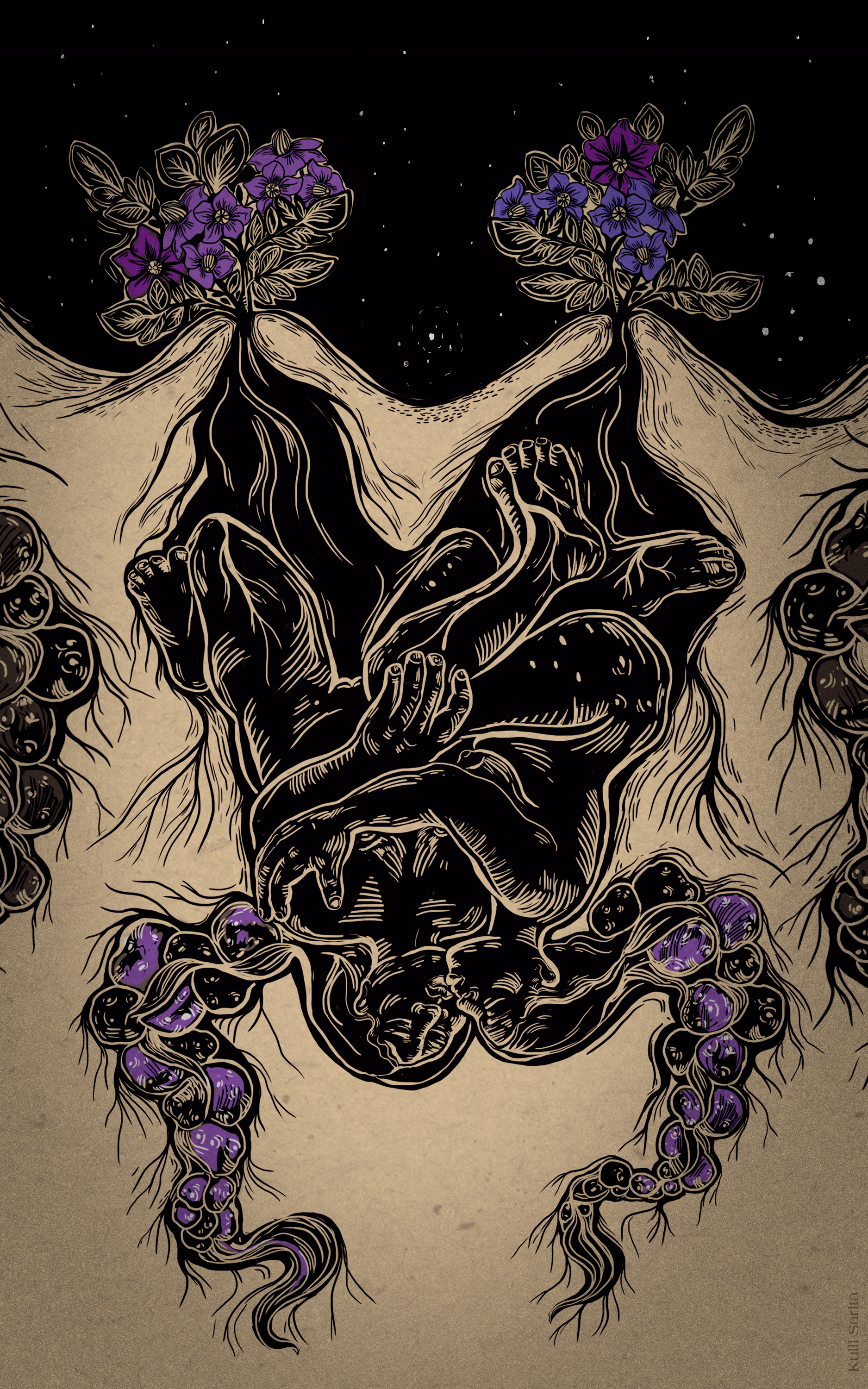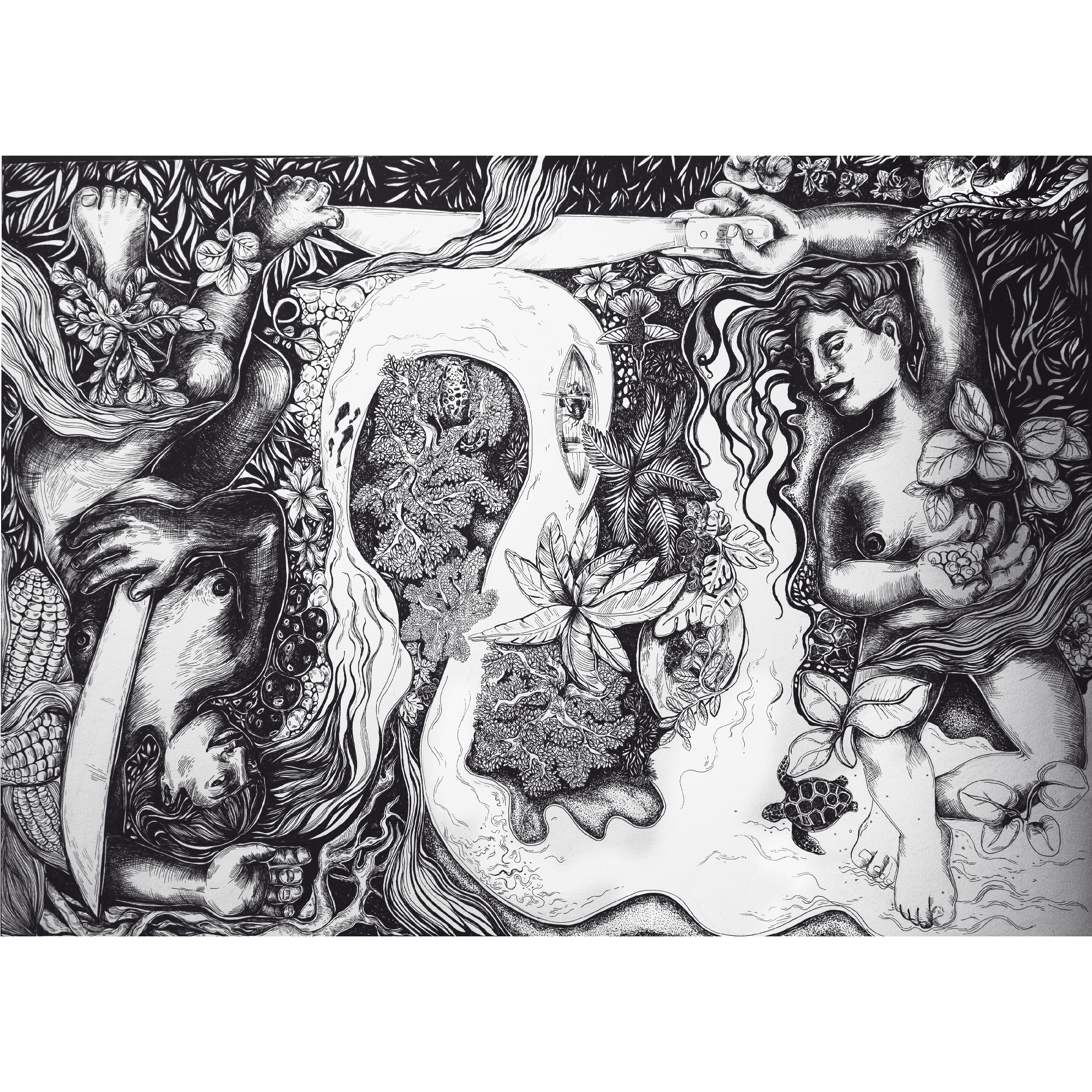Kulli Sarita
ILLUSTRATOR
BOLIVIA

Kulli Sarita (she/her) is an illustrator from Cochabamba, Bolivia. She studied graphic design and visual communications, and is now learning engraving and other printed arts. Her work is inspired by anticolonial, anticapitalist, and antipatriarchal resistance. She constructs her work through the reaffirmation and vindication of local knowledge and territorial defense of autonomy, liberty, and life in joyful and worthy rebellion. Her work is inspired by her family's agricultural tradition, establishing connections between urban and rural experiences.
Follow Kulli Sarita on Instagram and read more about her work in her own words in the interview below.
Kulli Sarita (ella) es una ilustradora de Cochabamba, Bolivia. Se formó en diseño gráfico y comunicación visual, y se encuentra estudiando grabado y otras artes de impresión. Su trabajo se inspira en las luchas anticoloniales, anticapitalistas y antipatriarcales, construye desde la reafirmacion y reinvindicación de las sabidurías locales, la defensa de los territorios por la autonomia y la libertad y la defensa de la vida en alegre y digna rebeldía. Su trabajo se inspira en el trabajo de su familia enel sector agrícola para establecer conexiones entre las experiencias urbanas y rurales.
Siga a Kulli Sarita en Instagram y lea más sobre su trabajo en sus propias palabras en la entrevista que encontrará a continuación.
The bodies I draw do not reflect western feminine aesthetics. My art shows that we exist in our bodies and we embrace who we are without fear or shame; we vindicate our dark skins, strong hands, and big feet; small bodies, slanted and enraged eyes that show dignity.Kulli Sarita
What role do you think art can play in social change?
Art is a way to narrate, register, protect, guard, and create collective memories of our realities, and personal processes both intimate and collective, which includes the experiences and transformations of greater historical moments. The intention behind my graphic art has to do with making visible both the life experiences from my personal web of relationships, as well as the collective experiences of care and resistance. These range from my family’s agricultural work to the experiences of life in a city with deep Indigenous roots but is also profoundly racist, and the relations and care between women in order to confront patriarchal and colonial violence.
¿Cuál crees que es el papel que juega el arte en el cambio social?
El arte es una forma narrar, registrar, de proteger, guardar y hacer memorias colectivas de las realidades que nos atraviesan, de diferentes procesos personales, íntimos y colectivos, incluidas las experiencias de grandes momentos históricos y de transformación. La intención de gráfica que creo es hacer visible tanto las vivencias de mi red personal, como las experiencias colectivas de cuidados y resistencias. Estas van desde el trabajo agrícola que mi familia realiza; la experiencia de vivir en una ciudad con raíces indígenas pero profundamente racista; hasta las relaciones y cuidados entre mujeres frente a las violencias patriarcales y coloniales.
How is your artistic practice is connected to amplifying social movements?
Visibility is vital for our existence as women, Indigenous peoples and territories, and migrants, while they try to erase us from history. The bodies I draw do not reflect western feminine aesthetics. My art shows that we exist in our bodies and we embrace who we are without fear or shame; we vindicate our dark skins, strong hands, and big feet; small bodies, slanted and enraged eyes that show dignity. Making our history visible through different expressions is essential for me and keeps me living. It's the impulse to celebrate that we exist because we resist, we women, lesbians, Indigenous peoples and territories, farmworkers, migrants.
¿Cómo se conecta tu práctica artística con la amplificación de los movimientos sociales?
La visibilidad es vital para nuestra existencia mientras a las mujeres, a los pueblos y territorios indígenas, y migrantes, intentan borrarnos de la historia. Los cuerpos que dibujo no reflejan la estética femenina occidental. Mi arte muestra que existimos en nuestros cuerpos y abrazamos lo que somos sin miedo ni vergüenza; reivindicamos nuestras pieles oscuras, manos fuertes y pies grandes; cuerpos pequeños, ojos rasgados y enfurecidos que muestran dignidad. Hacer visible nuestra historia por medio de diferentes expresiones es fundamental para mí, es impulso celebrar que existimos porque resistimos las mujeres, las lesbianas, los pueblos y territorios indígenas, campesinaes, migrantes.
What do you hope to achieve through this award?
I hope to use this award to engage in learning processes, workshops, and classes, and use it for materials for my work. I hope to organize eventually a collective printing workshop.
¿Qué esperas conseguir con este premio?
Espero utilizar este premio para participar en procesos de aprendizaje, talleres, clases y materiales para mi trabajo. En algún momento quisiera organizar un taller de impresión colectiva.
Featured work



A fountain pen sketch speaking to the frustration of the immense violations of extractivism, capitalism, and patriarchy. What keeps us alive and continue with enthusiasm is that by defending our territories, we are also defending our hope and joy.
